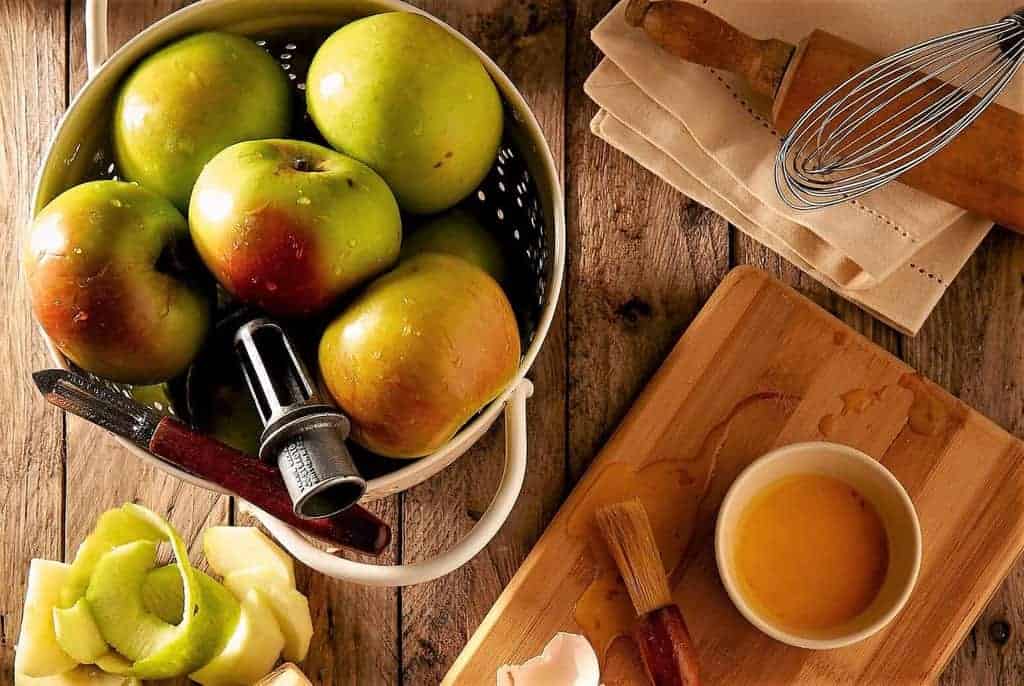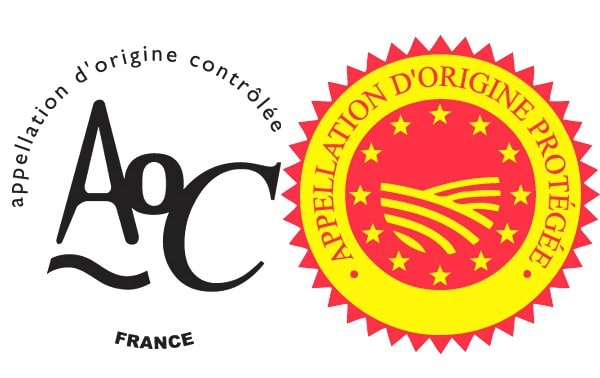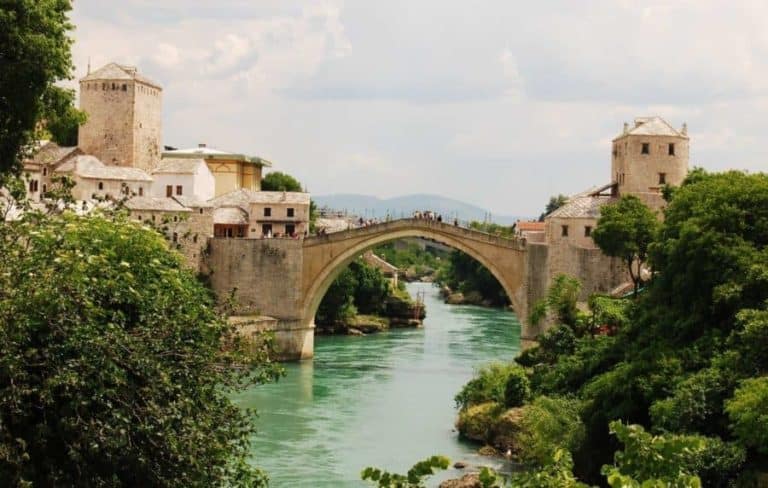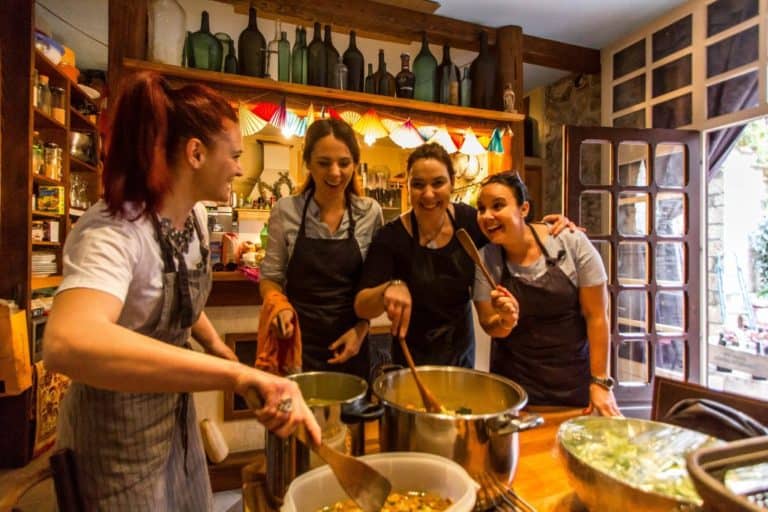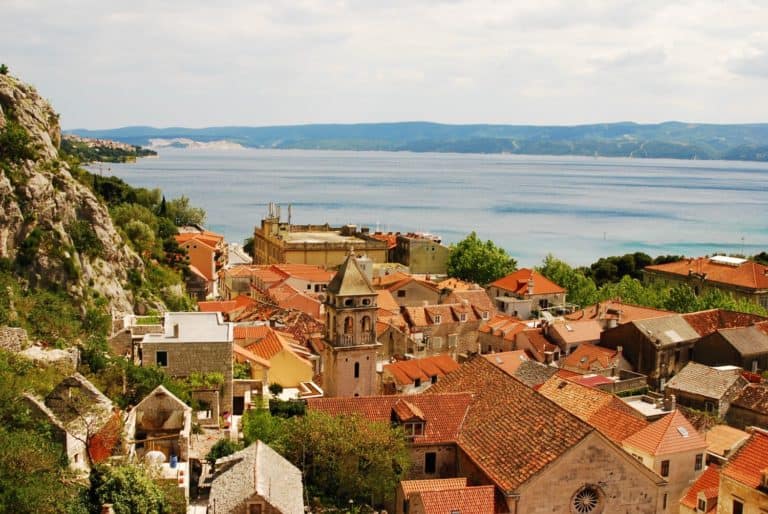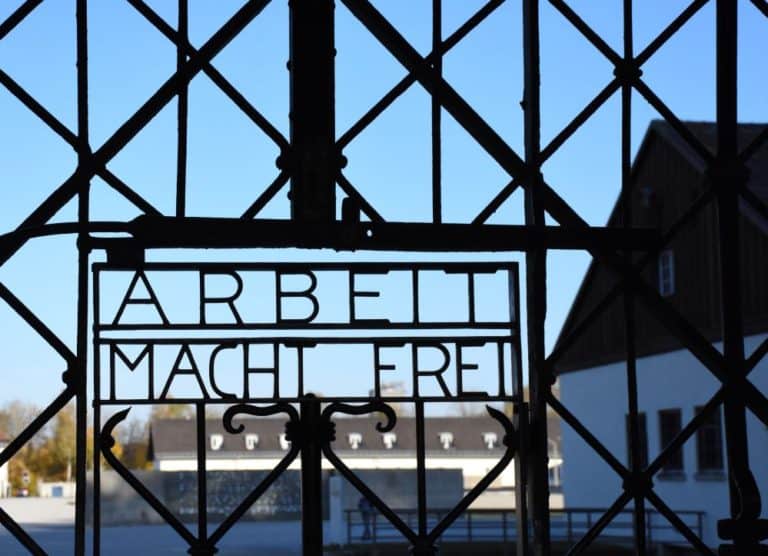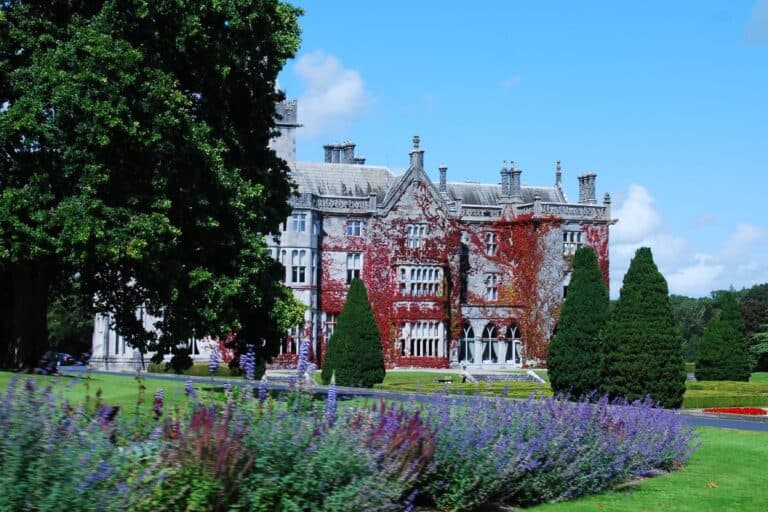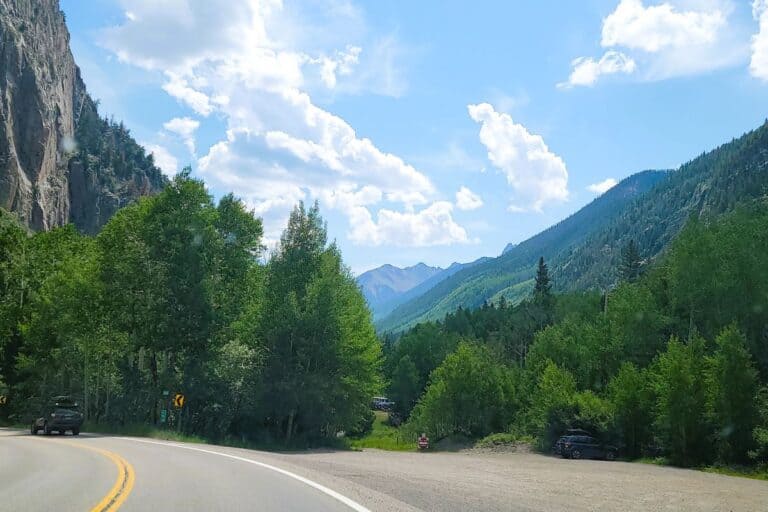Everything You Need to Know About the 4 C’s of Normandy France Cuisine
This site contains affiliate links to products or services that I recommend. Any purchases made through these links don’t add anything to your purchase price. It helps me keep the lights on and bring you quality travel tips. As an Amazon Associate, I earn from qualifying purchases. Thanks so much for your support!
My husband and I planned a trip recently for a few days in Normandy France primarily to visit World War II memorials and sites. Little did we know that we should have planned a much longer stay in the region, so we could work our way through all the unique and delightful French food and beverage options that we discovered there. We merely scratched the surface of this culinary paradise when we were there. This is what we learned both then and with much research since about these amazing goods produced in Normandy, France. Now you’ll be prepared when you visit.

Photo by Gautier Salles on Unsplash
The lush rolling countryside, temperate climate and nearly 400 miles of coastline are the perfect mix to create an abundant variety of locally produced culinary products from the land and the sea.
Because of their unique significance, many of the items carry an exclusive label that confirms that the product originated in the Normandy region and has followed strict quality standards in its production. Look for either an AOC or AOP designation (from the French government) to signify its regional distinction. As an example, Camembert Cheese can be produced anywhere in France, and even elsewhere in the world, but “Camembert de Normandie AOC” which is of superior quality, can only come from milk that is primarily from the Normande breed of cows and produced in Normandy France under strict production guidelines.
So, let’s start with the four most famous goods produced in Normandy France in the culinary world. Cider, Calvados, Cream, and Camembert. They’re called the “Four C’s of Normandy Cuisine” but these are just the tip of the proverbial iceberg. I talk about more in another post.
Cider, Calvados, and other Apple Products
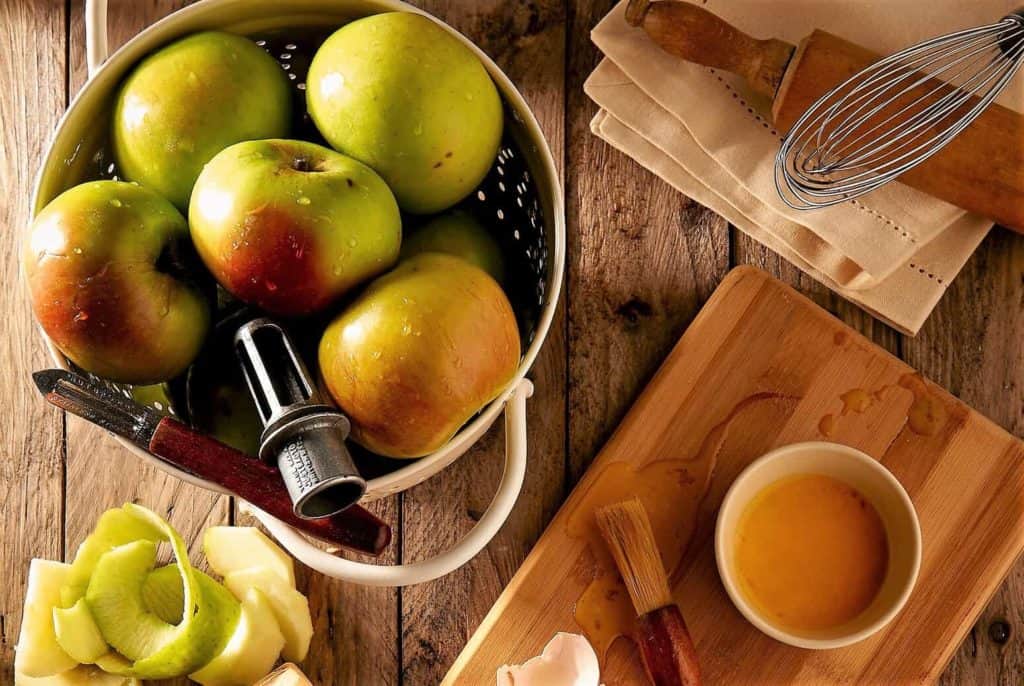
Two of the four “C’s” of Normandy France cuisine, Cider (Cidre) and Calvados are produced from some of the 800 varieties of apples that are plentiful in the region.
While researching these drinks, I was fascinated to learn that during World War II many apple orchards were destroyed by the constant shelling in the Normandy region during the D-Day battles. To protect their favorite drink, local farmers buried barrels of calvados to shield them from damage. After the battle was over, they dug up the barrels and shared the drink with the Allied troops that liberated them. This was the soldiers’ first taste of Normandy’s abundant culinary bounty. [source: France Today website]
If you’d like to read more about life in Normandy on D-Day at the end of World War II, read my post “Remembering the Humanity of D-Day”.
The best way to taste and learn about these alcoholic beverages is to travel the Normandy Cider Route. There’s a link at the end to more detailed info about the route. The trail includes 16 “official” cideries, but there are many others along the country roads as well – Signs for the Cider Route feature an apple symbol and clearly display “La Route du Cidre”. Each of these 16 producers offers cider, calvados, and pommeau.
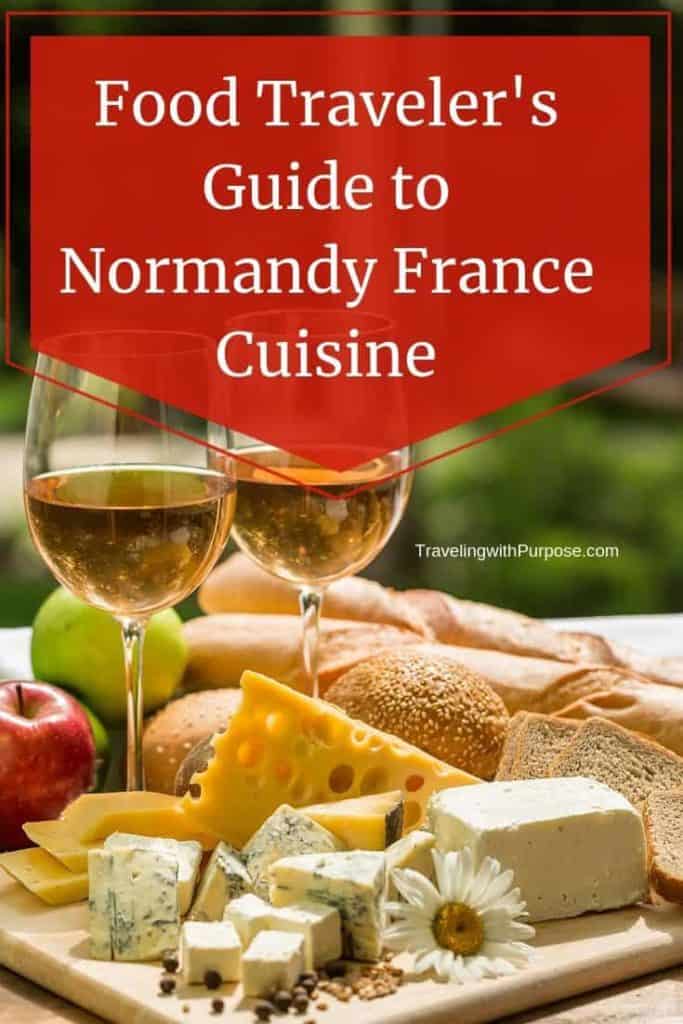
Cider
Hard cider is seeing a resurgence in popularity in the U.S., but has been served in Normandy some say, since before the birth of Christ. In France, varieties of this light refreshing drink can be categorized as sweet (Cidre Doux), semi-sweet (Demi-Sec) and dry (Cidre Brut), often carbonated and ranging in alcohol content from about 3 to 5%.
We first had the chance to try French cider in a cozy restaurant called Auberge Saint-Pierre on the island of Mont Saint Michel. That tasty Cidre (Bolee D’Armorique – Loic Raison) came from the Brittany region. Then when we arrived in the quaint seaside town of Port-en-Bessin, our Airbnb host gifted us with a bottle of cider from the heart of Normandy, three kilometers from Omaha Beach.
Cidre Fermier was sourced from La Ferme du Lavoir (The Farm of the Laundry). In July and August, they offer free tours of the farm and tastings on select days. We didn’t have a chance to follow the official Cider Route in Normandy France, but loved trying the various varieties of cider at restaurants while we were in the area.
![A bottle of local Normandy French cider sits on a wood table with a travel brochure, old fashioned house key and a rock with the word "Bienvenue" [welcome] painted on it.](https://travelingwithpurpose.com/wp-content/uploads/2019/09/Port-en-Bessin-Cidre-700-3.jpg)
Calvados
Calvados is a type of apple brandy produced only in Normandy France, with AOC designation since 1942. This double-distilled after-dinner drink is made using a similar method to cognac, creating an alcohol content of at least 40%. Yowza! According to its AOC requirements, authentic Calvados must be distilled for at least 2 years, but can be aged in oak barrels as long as 50 years.
Pommeau
This beverage falls somewhere between the two versions above. Combine 2 parts unfermented apple juice with 1 part Calvados (typically aged about a year), age the mixture in oak barrels for another 1 to 4 years and the result is Pommeau. This aperitif (served before a meal to stimulate the appetite) weighs in at 16 to 18% alcohol content.
In addition to the Cider Trail, where you can try all three of the products above, you can also find many Cider Festivals in the region, usually in October, during apple harvesting time.
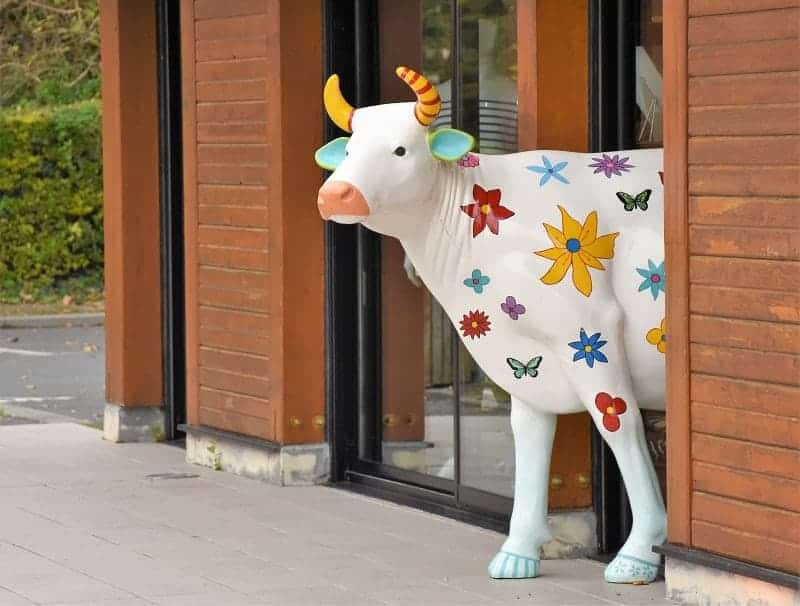
Products from the Normande Breed of Cow
Cream and Camembert cheese are the other two of the Four C’s of Normandy France cuisine and a hallmark of French recipes. They both are produced from the famous Normande breed of cow. Milk and cream from this breed are high in fat and popular for making high-quality butter and cheese, but also for its meat, which is marbled and good-flavored. This special breed of cow provides the ingredients for many other Normandy region products as well.

High Quality Cream
So let’s talk about the cream. Normally you’d think that all cream is the same, but since cream from Normande cows is higher in fat, that makes it richer and “creamier”. When you consider traditional French cuisine, is there a more common ingredient than cream? Imagine timeless recipes like Quiche Lorraine, Béchamel Sauce, Crème Brule, or Cream Puffs. The cream is what makes them stand out, so the better the cream, the better the recipe, right?
Camembert Cheese
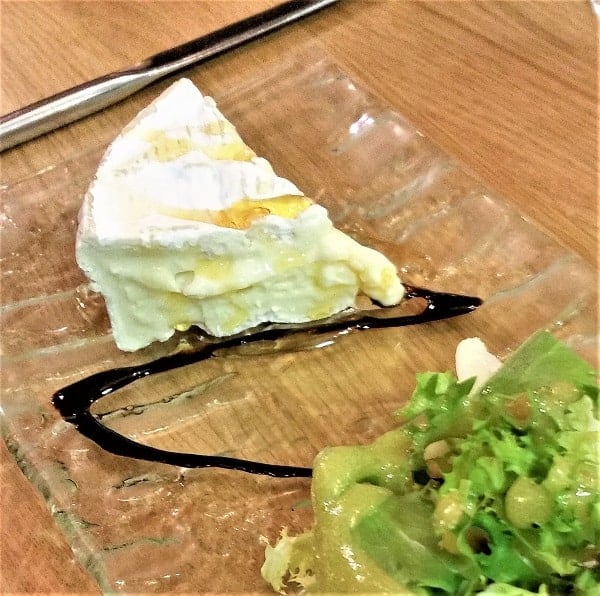
Camembert is similar to Brie, another popular cheese that originates from a region of France just east of Paris. Camembert’s taste is deeper and slightly more intense. It’s often described as earthier than Brie. Texturally, it’s denser, while Brie is a little bit softer. Experts say that Camembert has a “slightly salty taste and a typically barnyard, warm milk aroma”. (I’m not quite sure what barnyard warm milk aroma is, but let’s focus on the “warm milk” and not the “barnyard”.)
The taste of the cheese is milky and chalky when young, becoming stronger and more full-bodied as it ages. Nearly all recipes that call for Brie can be converted to Camembert, making it an excellent choice for parties and small gatherings.
AOC designated Camembert de Normandie is one of Normandy France’s four types of cheese that carry the AOC label. Livarot, Pont-l’évêque and Neufchâtel do as well. We had a chance to try the Camembert at the restaurant, L’Écailler in Port-en-Bessin on our first night in town. As promised, it was fresh, creamy and delicious.
Another interesting historical tidbit that I learned. A portion of Camembert was included in the military ration during WWI, which helped to contribute to its popularity.
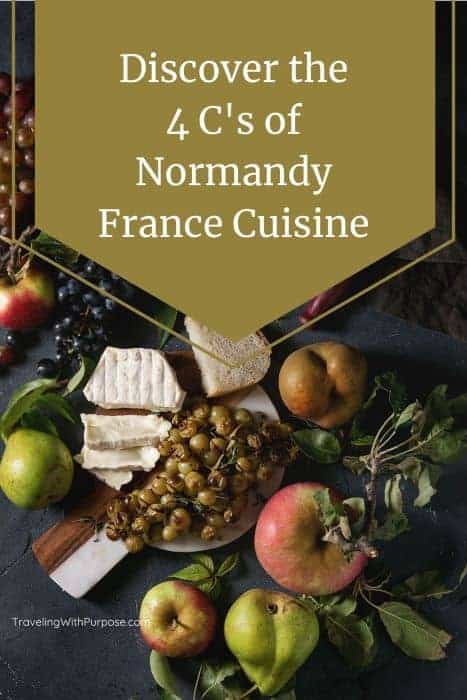
Food Trails, Celebrations and Festivals
Yes, of course, there’s a Normandy France Cheese Trail!
You can find many Cheese Festivals in Normandy, France, as well. These foodie celebrations generally run between May and September each year.
Are you looking for a great way to learn about the region and sample a variety of foods? Make plans to visit the “Apple, Cider AND Cheese Festival”. You can attend each year on the last Sunday in October. Hosted by the city of Conches En Ouche (about a 90-minute train ride from Paris).
Here’s the scoop on Normandy’s Official Cider Route
Other foods that are not part of the 4 C’s, but are well known in France are edible truffles and mushrooms. My post “20 Events Celebrating Edible Mushrooms and Truffles” will help you find fungi-related culinary events in France and other parts of the world.
Planning Your Trip
Looking for deals on accommodations? Click the button below to “See All Deals” in Normandy, France for your travel dates. And here’s a handy article from fellow bloggers, Bev and Sham about “Things to Know Before Traveling to France”.
You’ll find links to other food and beverage-related activities in Normandy below.
I hope you’ve had as much fun as I have learning about the 4 C’s of Normandy France Cuisine. Watch for my next post about all the other delicious offerings along the West Coast of France. Do you have other tips or questions about Normandy? Let me know below, please.
Booking your trip? Here are some of the resources I use myself:
-Book great deals on flights with Cheap-o-Air
-Discover cool lodging with Booking.com
-Find the best prices and perks for cruises at CruiseDirect.com
-Reserve your vacation home rental with VRBO
-Book your car rental with RentalCars.com
-Buy your travel insurance with InsureMyTrip
-Book unique travel tours with Get Your Guide and Viator
-Find delicious culinary experiences with EatWith
-Find even more of my favorite travel resources here.
When you use these links I earn a small commission, at no extra cost to you. This helps me pay the bills and allows me to continue to create and share free tips and advice to help you travel better. As an Amazon Associate I earn from qualifying purchases.
Learn More About:
- French AOC and AOP Product Designations
- A Great Place to Stay on the Normandy Coastline
- Normandy Cheeses by Region
- Normandy Cider Festivals in October
- Dozens of Farms and Producers Offering Tours and Tastings
- Where to Taste and Visit Normandy Culinary Businesses – Farms, Cideries and much more
- A Bit of World War II History in the Region

